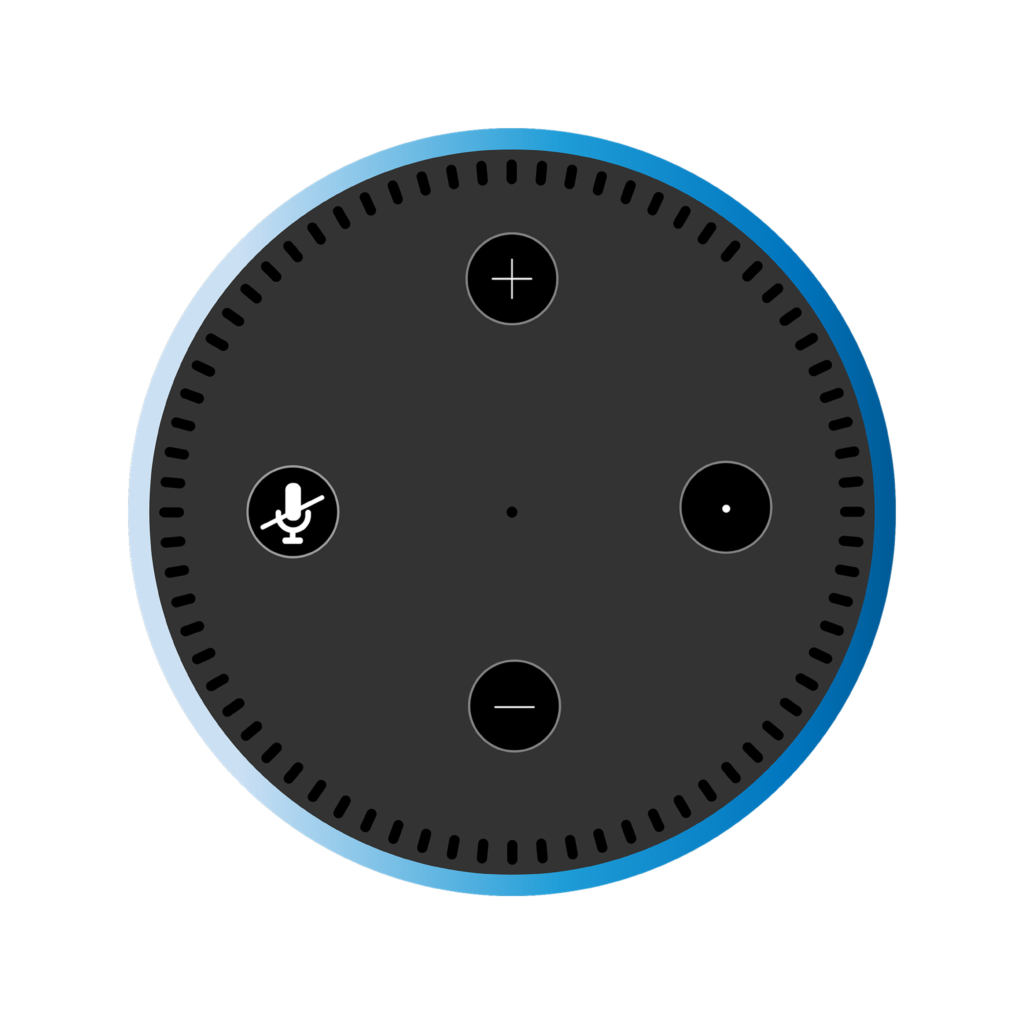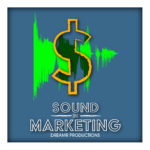Voice Assistance and Advertising
In the past, sound was underutilized and pretty much ignored in marketing. However, the tides are turning and it’s becoming more and more prevalent every single day. With the huge focus on Voice Activated Technology, AI, AR, and even the rise of Podcasting, it is clear that if you don’t have a unique voice, you will be lost in the ever increasing noise.
But here’s the great news. Because of the never ending always increasing forms of digital media and online advertising, we have more opportunities than ever before to make ourselves heard and be creative in defining a unique sonic identity.
In The Beginning
Voice assistance has progressed in leaps and bounds in the few short years of its existence. The fact that it addressed a need that wasn’t actually a need but a convenience and took off the way it did pretty much blows my mind. And although there is a long way to go, it has settled comfortably into our lives and allows us to use its most simplistic functions within our day to day such as “Alexa, play music”, “Alexa, what’s the name of this song?”, “Alexa, add milk to the grocery list”. Personally, this is my day to day use of my Echo Dot.
What I have found with voice assistance technology thus far is that it’s easing us into its value as well as our dependency on it. For instance, I experimented and said “Alexa, play something by Taylor Swift”. I got the response, “’Sure! By the way, did you know that Taylor Swift is performing live in Stockholm on November 15th?”
Voice is learning to anticipate. This is slightly reminiscent to me of a Google Search inquiry. You start typing something and suggested searches start to appear as you’re typing. Knowing that Taylor Swift is playing in Germany does me little good seeing as I live in California and have never been to Stockholm, but maybe it gets me to ask a follow-up question like when is she playing in LA….something like that.
So what does the world of online shopping look like with this new option of voice?
As consumers are still far more familiar with search by screen then by voice, there are a lot of shopping options that are not widely used. “According to the March 2019 Smart Speaker Consumer Report, 40.2% of smart speaker users in the U.S. find recipes and cooking instructions using their devices, and 26.1% do so monthly. Of the most common questions consumers ask voice assistants, 23.2% of questions fall into the restaurant category.”
So the trend, as of now, is on food.
Foods First Voice Focus
Starbucks, Seamless, and Grubhub have figured this out and have invested heavily on voice activation “delivery and takeout skills” with Alexa. They, along with many other retailers and food companies, have taught Alexa skills to make it that much easier for someone to order from them as well as order from them again.
Ordering from voice soley can get complicated; especially with more complex orders. However, once the voice assistant can get that order correct, it has been logged into its recall memory and the user then has access to reordering it again but without the initial rigmarole. I can see this as especially helpful for staple items such as a favorite drink from Starbucks or a picky eater for a fast food delivery order.
Just like setting up your entertainment system; the initial set-up is complicated and more than a little annoying. But once it’s done, then it just takes a few clicks and you’re watching your show.
The Rise of Voice Shopping and Spending
According to Voysis and Voicebot.ai, voice shopping will account for $40 billion in U.S. consumer spending by 2022. For something that’s only been around for several years, that is some fast growth.
If you’re interested in viewing the whole copy of The 2019 State of Voice Assistants as a Marketing Channel, you can download it from the Voicebot.ai website. It’s a very detailed and highly fascinating report.
So the learning curve that we have on the speakers isn’t necessarily a factor. Voice activated technology usage will increase with or without the growth or decline of new speaker technology.
Voice can’t be ignored. It is definitely a player and we need to find a way to utilize it in our marketing now or we’re not only losing out on huge opportunities but we will fall behind in brand recognition and exposure.
Alexa, Send Me A Sample
Voice shopping is definitely in its infancy and voice assistants still gets voice queries horribly wrong most of the time. But one of the easiest things at this point in time is a re-order strategy. And that’s why I titled this episode “Alexa, send me a sample”.
Consumers have been accustomed to speaking to their phones for awhile now. We ask for directions, we search for the weather and the news, we constantly kill trivia. Interacting with our computers through voice has become relatively normal. We “expect” to get the right answer and we trust (whether we should or not) the answer given to us.
In so saying, it appears we have become amenable to voice advertising. Adobe Digital Insights (ADI) conducted a survey and found that 43% of those surveyed find voice ads less obtrusive than TV, print, online and social advertising. 42% found them to be more engaging. 39% admitted that they would go back to purchase based off of that voice ad later on and 35% also were not likely to skip a voice ad.
In my past episode with Scott Simonelli from Veritonic, we spoke about how those audio based ads that listed all the disclaimers actually were received better than text disclaimers on a video based ad. I was not expecting that.
Colin Moris, Director of Adobe Analytics has a theory on why this is. He says,
“Voice ads have the power to resonate more emotionally and personally with a customer. The control is put back into the hands of the consumer with ads delivered based on the information they opt to provide to us making the content delivered relevant and engaging, enhancing the customer experience.”
Colin goes on to claim, and I tend to agree, that…
“The demand is there—now it’s just a race to see which brand captures the opportunity first.”
What’s Next?
Smart speaker purchases may have begun to slow, but the frequency of use of those already incorporated into the home has remained consistent. Those of us that have already opted in to the tech are using it and learning it. And those that are not …will eventually.
My Thoughts
As this new technology advances and evolves, we’ll be seeing more and more opportunity to learn and grow alongside it. We’re already doing that. We’re learning how to “add a skill” onto our smart speakers or say the right key phrase alongside those companies and developers that are figuring out how to make that possible right now.
As we get more accustomed to this action, we’ll feel more receptive to trying out all the new ways of using voice as they present themselves one by one. Voice will be in everything; cars, wearables, smart speakers, ourselves (maybe…? )
Here’s my theory. Smart speakers are creating evangelists for their products. If we have a positive experience using our speakers, we’re going to tell people. And word of mouth suggestions is one of if not the most powerful and organic forms of marketing we have to our advantage. That’s why we read the Yelp ads, ask advice from friends and family, read review after review after review before making a decision..or not making a decision.
As this word of mouth spreads along with voice technology growing in popular knowledge, it will just become “a thing”. Like having to have a smart phone rather than a flip phone. Or having to have a Tesla over whatever car you currently own that works just fine (you know it’s true).
We want what we see. And when we see it more and more, we want it more and more. So we’ll get it…eventually.
We may not need it, but we’re going to have it. That’s just how our culture and society works now-a-days. So if this is the way of things, then we need to be creative with our brand and how it fits into this space. It may not be clear now, but taking baby steps into voice experimentation is the best thing we can do at the present day.
The audio revolution is a free for all right now. Even with this podcast. As far as I can tell, I’m the only one reporting on what I’m reporting on. This could be to my advantage so we’ll see where it takes the Sound In Marketing podcast as well.
If you are e-commerce, the idea of sending a sample through voice technology has most likely already occurred to you. But for those of us that are not e-commerce, it may be harder to come up with a way to utilize voice skills and UI and all of that. Other than having Alexa know what the Sound In Marketing Podcast is, I haven’t got it figured out yet either. But you better believe I’m working on it.


